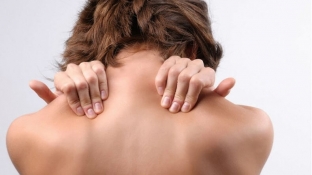Fat excess in the region of the 7th cervical vertebra was called by people – widow's hump. Perhaps its meaning lies in the fact that such an increase in adipose tissue is characteristic of older people (note that not only women), and one of the reasons for its progression is an incorrect load on the shoulder girdle, when the head often remains bowed down. Unlike most plastic surgeries for the back, which usually have an aesthetic focus, in the case of a widow's hump, we can talk about medical indications, since the fat roll on the neck can compress important vessels and disrupt the blood supply to the brain. Read about the features of the correction of this zone at estet-portal.com.
The reasons for the formation of a widow's hump
It is important to know the causes of the growth of fatty deposits in the neck area in order to choose the right method for correcting the widow's hump, to identify and prevent possible risks of complications and relapses.
The main reason for the local growth of adipose tissue on the back of the neck is called a violation of the hormonal balance – for example, during the approaching menopause. That is why the so-called widow's hump is characteristic of women over the age of 40-50.
Among other reasons that provoke the growth of a fat roller in the region of the 7th cervical vertebra, the following are called:
- permanent sitting work in an uncomfortable tense position with head tilted;
- lack of moderate physical activity, movements for the shoulder girdle;
- age-related decrease in the range of motion in the neck and shoulders;
- taking certain strong medications (such as glucocorticoids).
The formation of a widow's hump may be a genetic feature: when older relatives show this fatty growth – it is very likely to appear in the younger members of the family.
At first, the widow's hump is more of an aesthetic defect that spoils the line of the shoulders, sticks out above the neckline of the clothes. But gradually, the adipose tissue thickens and begins to compress the vessels that supply blood to the brain. This is manifested by dizziness, tinnitus, headaches, memory impairment. Further growth of fatty deposits in the back of the head causes apnea, disrupts sleep.

Surgical correction methods to remove the widow's hump
The peculiarities of fat deposits in the neck area are that typical methods of softening the roller with non-surgical methods and even the usual pumping out of excess fat, as is done with liposuction in other parts of the body, do not work here.
Over time, a capsule of dense connective tissue forms around the fat deposits on the neck, which prevents the absorption of fat.
Adipose tissue in the neck area is densely mixed with connective tissue layers, which also need to be destroyed along with fat cells during liposuction. Therefore, the optimal method of correction is laser liposuction
Tumescent liposuction can be used to correct the widow's hump, which avoids recurrence of fat buildup in the neck, but this type of intervention significantly injures the blood vessels, which carries the risk of embolism. A good effect can be obtained from ultrasonic liposuction, which is very gentle and minimizes blood loss, but little affects the connective tissue, so that with this method of correction, the percentage of relapses is very high.
During laser liposuction, both adipose and connective tissues are destroyed, which becomes a good prevention of relapses. During the operation, the laser pulse heats the tissues of the skin, subcutaneous tissue, leading to the sealing of blood vessels, which significantly reduces the risk of blood loss and hematoma formation. However, skin scarring can occur from heating, so one of the important contraindications to surgery is the tendency to form hypertrophic and keloid scars. Another complication of the operation can be damage to the nerve endings from overheating of the tissues, which leads to numbness of the skin, and in some cases even to its necrosis.
To prevent the risks of complications after removal of the widow's hump, a thorough examination of the patient before surgery, a detailed history taking, patient compliance with all postoperative doctor's recommendations, especially regarding wearing a compression bandage and limiting physical activity.
Read also: Masticatory muscles and premature aging of the face: what is the connection







Add a comment